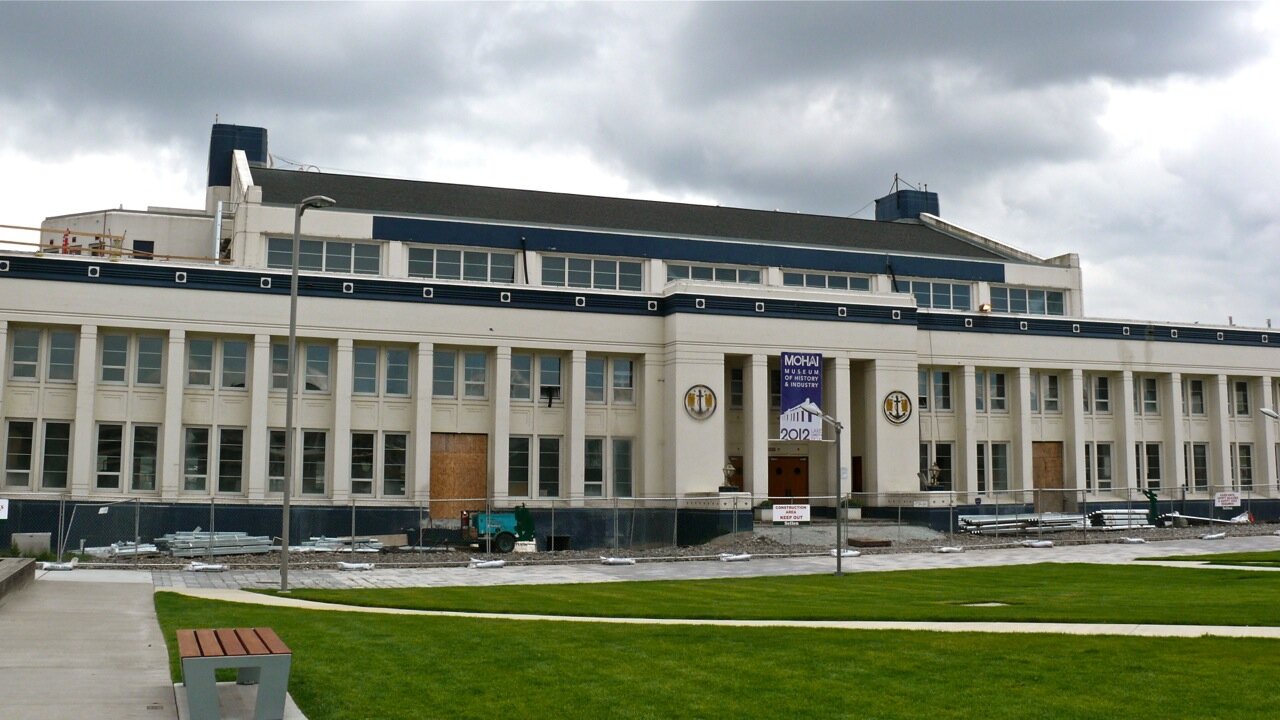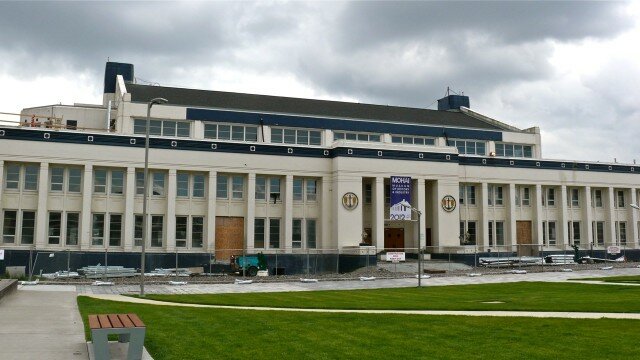Watch History Making: Lake Union Stories on PBS. See more from KCTS 9 Specials.
Are you ready to MOHAI, Lake Union? This Saturday, December 29, is MOHAI’s Grand Opening in the museum’s new lakeside digs, but members and supporters are getting sneak previews today. Saturday’s admission is free, but you had to pre-register, and as of now, all the pre-registrations are filled from 10 a.m. to 8 p.m. “We will have a limited number of walk-up tickets available for each time slot (every half-hour from 10:30 a.m. to 7 p.m.),” advises MOHAI, if you’re desperate to get in.
Here’s what you may or may not be missing (schedule pdf):
…a ribbon-cutting ceremony at 10 a.m. From 12 p.m. to 7 p.m., hourly performances are scheduled from local acts such as poet Henry Luke, the Chief Sealth Marching Band, and opera singer Sarah Fletcher. Visitors will also have the chance to take part in various activities including Salish weaving demonstrations, print making, and a build-your-own periscope project sponsored by the Puget Sound Maritime Historical Society. Food and beverages will be available at the museum’s new Compass Café by Northwest Catering and a number of food trucks including Dante’s Inferno Dogs and Street Treats.
Sunday the Grand Opening continues, with paid admission ($14 adults) and timed entry. You can pick your entry time in advance. Your next free admission opportunity is Thursday, January 3, when the museum will be open from 10 a.m. to 8 p.m. The draw that night is brought to you by the letter R:
On January 3 MOHAI, along with Pabst Brewing Company, will also host a celebration for the iconic, 12-foot-tall Rainier ‘R’ sign, which has been restored and placed at the top of the Wall of Icons in the museum’s Faye G. Allen Grand Atrium. All are welcome to join for photo ops with the one-of-a-kind Rainier Harley Davidson Fatboy, and to witness the Wild Rainiers grazing throughout Lake Union Park. The event will culminate at 7 p.m. with a short ceremony and presentation of the icon’s place in Seattle’s heritage.
The digs themselves are not new — the Museum of History and Industry is taking over the old Naval Reserve Armory in what’s now Lake Union Park. It’s a more central location that the museum may thrive in, though long-time patrons may miss the expanses of free parking afforded by its old Montlake location. But forced into a move by the 520 bridge replacement project, MOHAI was offered the armory-slash-white-elephant by the city, which had no particular use for the cavernous 50,000-square-foot space, or desire to maintain it.
Picking up and moving will eventually cost MOHAI an estimated $90 million. The Seattle Times breaks down the expense: “$30 million went into renovating the armory building, $15 million for exhibits, $17 million to ancillary facilities, such as a Georgetown building being used for workshops, storage and some offices. Other amounts have gone to endowment, reserves and institutional development.” MOHAI hopes the upgrade and new location will bring an additional 40,000 visitors a year, totaling 100,000.
Seattle Met got to take a sneak peek: “Big, beautiful windows let all the sun Seattle can muster shine into the main hall, while portholes—and the ever-ready periscope—offer views of Lake Union. The permanent exhibit lines the north and east ends of the museum, so as you examine the model ships behind glass, you can see an actual historic tugboat out the window.”
That sounds terrific, but the sound of fund-raising must be equally loud, since the state, through the Washington Department of Transportation, has been trying to significantly reduce the monies it once promised MOHAI in compensation for its move. Back in October, WSDOT presented a new appraisal of MOHAI’s Montlake real estate that dropped to $4 million from $18 million. That $14 million difference could mean the difference between a lively museum and a museum’s grave.

